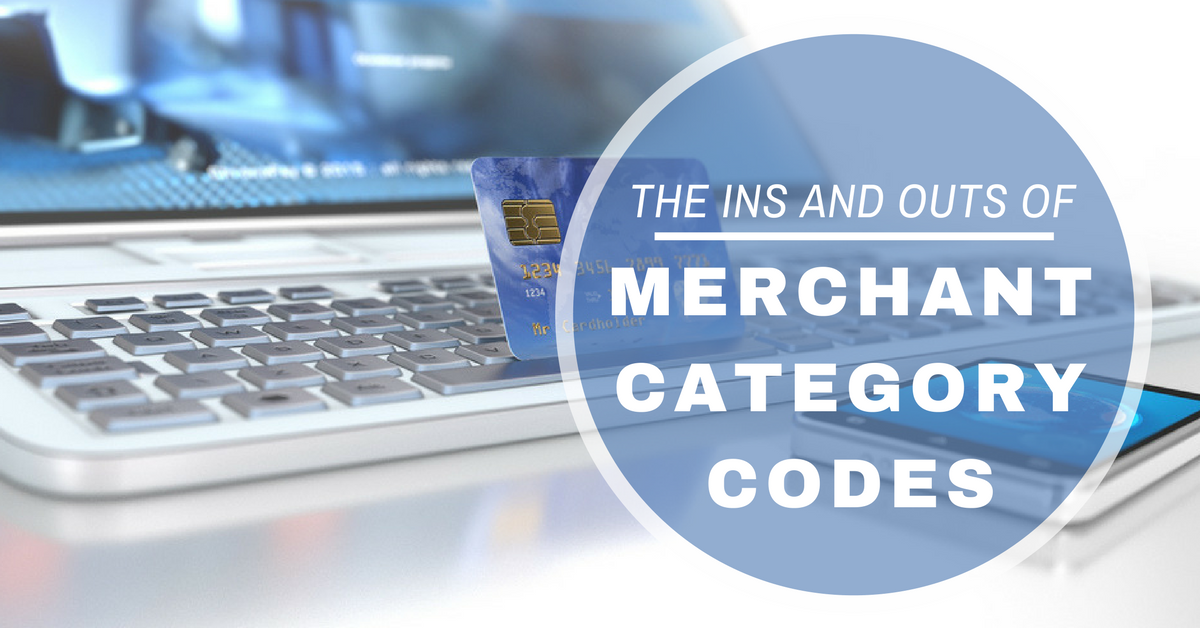
The IRS originally created merchant category codes to simplify 1099 reporting for commercial entities. Now used for many purposes, the merchant category code assigned to a business impacts the bottom line. A high-risk ecommerce merchant needs to know and understand high risk merchant category codes and how they can impact results.
Merchant Category Codes Explained
When merchants establish payment-processing capabilities today, credit cards enter the mix — for both bricks-and-mortar stores and ecommerce shops. The acquiring bank or processor assigns a four-digit number called a merchant category code (or MCC) to classify the merchant’s business and types of products or services offered.
As examples from the IRS list, code 0780 identifies landscaping services and codes in the range 3000-3299 identify airlines. Other market segments attract specific MCCs, including high risk merchant category codes that distinguish “travel agencies and tour operators” from “drugs, proprietaries, and sundries.”
Codes may differ among Visa, MasterCard, American Express, and Discover because the IRS gives card companies leeway to establish their own codes. The credit card companies need to see the MCC on digital transactions in order to process payment transactions.
Some businesses require multiple MCCs to properly reflect the types of products sold. For example, large grocery store chains and discount stores often separate grocery item sales from pharmacy and other product transactions.
A separate pharmacy check-out counter enables the MCC coding of store sales transactions to remain mostly accurate, when coupled with store policies prohibiting grocery and other sales at the pharmacy counter. The MCC data enables more robust business reporting.
Banks and credit card companies that offer rewards (points) or a loyalty (cash back) programs utilize merchant MCC codes to facilitate the accumulation of purchasing data for their customers’ benefit.
And of course the use of high risk merchant category codes and other MCCs helps issuing banks and the credit card companies better understand the spending behavior of their customers, allowing more targeted marketing campaigns.
Coding High Risk Merchants
Just like other new businesses, high risk ecommerce merchants seek acquiring bank relationships in order to accept payment cards for online sales. They’re often hard to come by, especially for start-ups and ecommerce merchants operating in unique verticals deemed high risk or prohibited by some banks and payment card brands.
Merchant category codes aren’t negotiable when setting up a merchant account, but will be assigned if an application is approved. The application process thus provides these merchants’ best opportunity to influence the specific high risk merchant category codes applied.
Appropriate planning and open, honest discussion support high risk merchants’ best interests during the process — especially for those planning to run complex or dynamic business models that are not well understood by traditional banks.
Risk management underwriters review all aspects of the proposed business including: company directors’ and owners’ credit worthiness — a business plan defining the target market(s) — projected volumes (both value and number of transactions) — business processes for order fulfillment, refunds, and customer service — the company website — and marketing materials.
Ideally, the materials submitted for review articulate consistent messages that lead to an appropriate MCC. It should generally reflect the primary or greater percentage of business. Once assigned, high risk merchant category codes cannot be changed easily.
However, if the nature of a business changes materially over time and the MCC no longer accurately reflects the primary nature of the business, discuss with your processor the idea of adding a second MCC or applying through the acquiring bank to the card brands for changes.
Impact on Processing Rates
Businesses that carry a lower risk for payment processors generally invite lower credit card interchange fees (rates set by major card brands that govern most online payment processing fees).
Payment card brands use MCC classification as a measure of risk. They can identify prohibited business types, and use the codes to influence interchange fee qualification of given transactions. So MCCs partially influence the cost merchants pay for credit card processing.
Every payment transaction qualifies for specific interchange rates based on multiple factors, including specific MCCs or high risk merchant category codes. Merchant account providers pay the interchange rates to issuers and then assess fees to merchants to reimburse them for the interchange rates, plus profit.
Helping up front to ensure high risk merchant category codes are accurate may help merchants qualify for the best interchange rate available. Because interchange represents the majority of all processing costs, it behooves merchants to make a strong effort.
Chargeback mitigation and management are especially important for merchants assigned high risk merchant category codes, because of the higher fees applied to individual chargebacks. Robust chargeback management helps high risk ecommerce merchants reduce those fees, and perhaps avoid having to establish and fund a reserve account.
To the extent that an online business utilizes payment cards to purchase goods or services from other merchants, those MCC codes will assist in managing the business’s expenditures and in filing appropriate 1099 forms for any services purchased at U.S. tax time.
